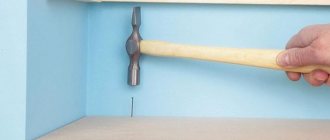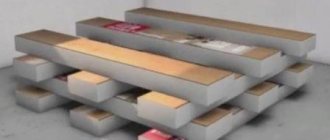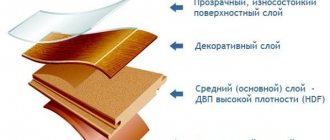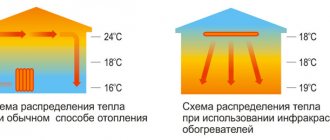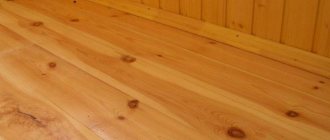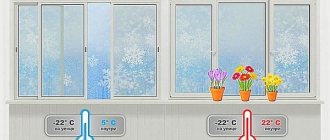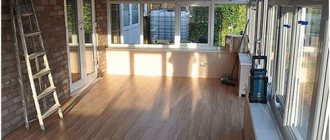Balcony insulation is carried out to save heat in the apartment or simply to create a cozy corner and rational use of its area. The list of works includes installation of a sealed frame, insulation of the ceiling and walls, heating. Often, for heating, it is necessary to install a radiator, but a warm floor on the balcony will be more effective and economical than installing a battery. There are 2 types of underfloor heating: water and electric. They have different heat sources, but the installation is practically the same. The electrical system also includes new varieties that have simplified the installation of structures as much as possible.
Water system
Heating in a water system is provided by hot water, which moves through tubes located in the concrete screed. If the apartment has individual heating installed, this heating option will be acceptable. The underfloor heating pipes will be integral with the radiator system, and the water will circulate through one circuit. If the heating is centralized, you will need to tap into a common riser, for which you must obtain permission from the Housing Office.
Electric heating
An electric floor will help you get rid of the hassle of permits and welding work. However, its installation also requires the installation of a concrete screed. It should be noted that it raises the surface by at least 5 cm. The heating elements in this case are cables. They are protected by reliable insulation, can heat up to 70ºC, are safe and durable.
Cable heated floors on the balcony are calculated with a power reserve. This is due to the characteristics of the balcony itself, which is the coldest room in the apartment. In this case, 1 m2 of system requires a cable power of 200 W. The advantages of water and cable systems are the ability to place heavy objects and furniture on the floor. However, on the balcony they are usually not needed or take up little space, so you should pay attention to alternative types of heated floors.
Electric heated floors without concrete screed
The following modern systems do not require a concrete screed and can be installed easily and quickly:
- thermomats,
- infrared floor
Infrared radiation
Tape heated floors on loggias and balconies can be installed in 1 hour. It is also available in roll form and does not require the use of adhesive mixtures. Well suited for laminate and linoleum.
You should know that it is not located on areas of the floor where furniture will be placed.
Inside the thinnest thermal film there is carbon, which is heated using conductive copper wires. All contacts are protected by special elements coated with silver. When the system is turned on, it produces long-wave radiation called infrared. It heats objects, in this case the floor, while energy consumption is the most economical.
Installation under concrete screed
First, let's look at how to make a warm floor on a balcony with your own hands under a concrete screed. Work should be carried out in the following order:
- If the balcony is planned to be used as an extension of the room, preliminary screeding of its base is carried out so that with the already laid heated floor, a single and flat surface is obtained;
- A waterproofing coating is laid on the base, as well as a layer of thermal insulation, which will significantly reduce heat loss. A reflective substrate foiled on one side is perfect for these purposes, although the option with dense foam should not be discounted;
- The pipeline is laid on mats specially designed for this purpose or on brackets fixed directly to the base of the balcony;
- Marking is carried out - if the area is small, you should choose a snake laying rather than a spiral. The pitch between turns is 15 - 20 cm;
- The pipe must be seamless; the best option is a metal-plastic product. When bending, you should refrain from excessively sharp bends;
- After installation is completed, the heated floor is connected to the heating system and started in trial mode;
- If everything is in order, pour a concrete screed - a thickness of at least 3 cm, after which hardens the floor covering is laid - linoleum, tiles, etc.
Well, now it’s time to talk about how to make a warm floor on the balcony and then cover it with laminate. The sequence of work is as follows:
- A thermally reflective layer is installed - a thin roll-type insulator is optimal for this purpose. The canvases are connected to each other with tape;
- The infrared film must be laid with the metallized side facing up. Laying should be carried out without gaps, over the entire area of the room, with a distance of approximately 10 cm from the walls;
- The edges of the film are fixed with tape, the wires are connected to special copper clamps;
- The edges of the film, like the contacts, are wrapped with electrical tape;
- The temperature sensor is hidden in a corrugated pipe, after which it is connected to a temperature regulator, which should be located in the middle of the room just above the level of the final floor covering;
- A trial run of the system is carried out to check the functionality of its individual elements. For these purposes, it is advisable to use a special infrared sensor. If after a few minutes some of the areas have not heated up, you should pay attention to the quality of the contact connections;
- If everything is in order, the film is covered with a foam-based polyethylene backing or cork, after which the laminate flooring is installed.
Heating mats
Such a system consists of many special heating cables, which are comprehensively fixed to a mesh that serves as a base. Fastening is done in the form of a snake around the entire perimeter.
Heating mats, whose power reaches only up to ten W/m, are best used as auxiliary heating.
The system has the following advantages:
- High degree of safety, absolutely not harmful to human health.
- Using such a laminate heating system, the floor level will rise by no more than half a centimeter.
To heat rooms of non-standard shape, you can cut the base without damaging the warm cable itself, and lay it on the floor with your own hands.
A heated floor system using a mat system is considered a ready-made structure that just needs to be laid and connected to the network to start working. It does not need to be secured, but when used with laminate, it is better to secure it a little.
The installation process consists of the following points:
- Even a concrete surface can serve as a base. For better adhesion, it is advised to completely remove dust and thoroughly coat the concrete with a primer.
- Check functionality using an ohmmeter. Do this before installation.
- Consider the installation location of the control device. Decide which option is better for installing the wiring, walls or floors, and make the necessary grooves.
- We install a sensor for adjusting the power level of the circuit.
- We roll out the laminate heating system and connect it to the network.
Features of insulation systems
Each method has its own advantages. Water-heated floors provide cheap coolant, but are difficult to install. Requires the purchase of additional equipment and accessories:
Summary
A distinctive feature of a city apartment is limited space. Therefore, their owners often have to look for the possibility of expanding the living space by demolishing the walls in the pantry, or by arranging comfortable living conditions on the balcony. And given that the loggia room is unheated, first of all you should think about how this situation can be corrected.
It is possible to equip an additional room taking into account all the requirements for comfort if you install a heated floor on the balcony, having previously carried out work on insulating the walls and ceiling. At the final stage of installation, a final finish will be required, which can be a laminate.
Description of fabric
Felt is a super dense and durable fabric. It is obtained by felting the fluff of hares, goats, and rabbits. Fur waste is often used for this.
Sometimes felt is made together with chemical soft fibers. This fabric can be either smooth or pile.
Model options
There are two types of underfloor heating systems.
- Water.
In this case, it is planned to lay pipes, the heating of which is carried out due to the hot coolant circulating inside. In this case, the operation of a heated floor is possible when connected to a central heating system or by installing an autonomous heating boiler. This floor is placed in a concrete screed. Warm water floor for a balcony - Electric.
Its installation involves laying a single- or double-core cable followed by pouring a concrete screed. Electric balcony heating system
To determine which type of heating is better, it is necessary to study in more detail the features of all systems.
Underfloor heating systems that are suitable for laying under laminate?
Today, there are three main types of systems of this kind on the construction market, which are used for laying under laminate:
- water underfloor heating system;
- electric cable heating system;
- warm electric infrared floors.
Moreover, regardless of the design features of these types of heated floors, they all have common positive qualities:
- uniform distribution of thermal energy over the floor surface;
- high efficiency of the heating system;
- heating elements of the heated floor under the laminate are hidden from view;
- lack of dust circulation as when using radiator heating.
But before giving preference to any particular underfloor heating system for laminate, you need to consider all the advantages and disadvantages of each heating structure separately.
Water heated floor: advantages and disadvantages
Undoubtedly, the water type has many advantages:
- This method can be used to heat large areas.
- Saving energy resources.
Considering that water circulates in the heated floor pipes, as well as in the radiators, this system does not require connection to the electrical network, increasing comfort and without affecting the readings of receipts for housing and communal services. Energy efficiency of the floor - Possibility of using the water option as the main heating or additional heat source.
- Space saving. Loggias and balconies, as a rule, have a small area. The pipes of the water system are located in the screed, so, unlike radiators, they do not occupy any useful space.
Despite all the positive qualities of the water option, it has significant disadvantages:
- Its installation is carried out followed by pouring a thick layer of concrete screed. This not only reduces the height of the ceiling and doorway, but also significantly increases the load on the interfloor ceiling.
- If a leak occurs during operation of the system, it is very difficult to find the location of its occurrence and eliminate the cause.
- To ensure pressure in the system, an additional installation of a water pump is required.
- When connecting this type of heating to a central water supply, it is possible to reduce the pressure in the entire riser.
Due to the need to fulfill the last point, it is used extremely rarely in urban apartments. This option is used in the premises of private houses equipped with autonomous heating and water supply systems.
How to install film flooring on the balcony
The design is lightweight, as it does not require a concrete screed. Bears a small load on the overall structure due to the insulation of the base with polystyrene foam, which prevents heat loss. Installation of the floor takes several hours.
How to lay the film:
- The surface of the insulation is covered with isolon, a foamed polymer material covered on both sides with foil.
- The joints are taped with metallized tape.
- Holes are cut out in the isolon with a knife for the contacts and temperature sensor so that the surface remains flat.
- The film is measured to the required length, cut along the dotted lines, and laid out on the isolon.
- Connected in parallel to the control panel.
- The contacts are crimped and insulated.
- The control panel is mounted on the wall.
For the control panel, it is better to install the distribution box on the wall in advance. For preservation, the film is covered with polyethylene so that there is no gap. Laminate is placed on top.
Advice! When installing the thermal film, carefully crimp the contact plates. They are fragile and break easily.
Electric models: varieties
There are several options for electrical models of heating systems:
- Cable. The heating element of cable models is a heating cable, which is a heat source, which allows it to transfer heat more efficiently. Comparing a heat cable with water pipes, it can be noted that the cable warms up along its entire length, and the coolant in the pipe cools as it moves away from the heating source. But just like with water pipes, the cable requires pouring a concrete screed and finishing, for which it is better to use laminate.
- Thermal mats. This option is essentially the same heating cable. A distinctive feature of thermal mats is that the user does not have to lay the reinforcing mesh, and then the cable, fixing it to the mesh. Thermal mat is a reinforcing mesh on which the heating cable is already attached. This option, like the previous one, is placed in a concrete screed.
- Infrared. If it is not possible to pour a concrete screed, or there is no desire to wait for it to dry, you can lay the infrared version on the loggia. In this case, the functions of the heater are performed by a film placed on the finished screed, directly under the laminate or tile.
Selecting a substrate
Conventional products can be used as a substrate.:
- Izolon.
- Rolled cork.
- Expanded polystyrene.
Experts have differing opinions about which option would be best. The experience of each of them is based on the use of different types of material under different conditions, so it is difficult to select the best option.
The requirements for the substrate remain unchanged - it must provide:
- No noise when walking.
- Conceal small unevenness of the base.
- Cut off the cold concrete slab from the laminate.
All these duties can be successfully performed by any type of substrate. Considering the possibility of capillary moisture penetrating the material, it is best to use impenetrable types - isolon or expanded polystyrene.
In this case, a cork substrate is less preferable, since it is capable of absorbing water, which threatens the appearance of mold, mildew, rotting, bad odors, etc. All this will affect the condition of the laminate, so it is better to refuse cork .
Features of electrical systems
It is better to lay any electric model under laminate or ceramic tiles, since these modern materials have a high degree of thermal conductivity. Thermal mats can be laid directly under the tiles, provided that the layer of tile adhesive is increased.
If you use an electric type of heating, energy consumption increases significantly. The disadvantage is the presence of electromagnetic radiation. However, in the case of using infrared models, its impact is reduced to a minimum.
Is it suitable as a floor covering?
The choice of laminate for installation on the balcony will be justified provided that glazing and insulation are available. Then the access of moisture will be significantly limited and the coating will be able to perform its functions under more or less normal conditions .
Open balconies are not suitable for laying laminate flooring, as precipitation and fog will quickly ruin the material.
Closed balconies that can protect the material from external influences must have normal double-glazed windows and are completely isolated from the outside space. That is, there cannot be any cracks or holes, or direct communication with the street.
Then there will be only one problem left - the formation of condensation, which can be solved by organizing sufficient ventilation and creating a microclimate on the balcony that prevents the appearance of sweating.
This will be helped by laying insulation, as well as a high-quality substrate that separates the concrete slab from the laminate and prevents water vapor from contacting the cold surface.
Photo of laminate on the balcony:
Which option to choose
Considering that owners of standard apartments are unlikely to be able to obtain permission from management companies to insert into central communications, one can not even dream of a water option. In addition, a thick layer of concrete screed laid under the laminate significantly increases the load on the interfloor floor.
It remains to figure out which electric option will be the most acceptable for use on the loggia. When installing such a warm floor on a balcony under a laminate, it is recommended to use cables with a power of about 190 W/m². Considering that the infrared type of heater has a power not exceeding 160 W/m², it will be ineffective on the loggia.
Therefore, when considering the option of heating equipment, and choosing a heated floor on a balcony or loggia that runs on electricity, you should choose a cable system. Moreover, the heat cable must cover at least 70% of the total area of the room.
How does infrared film floor work?
The heat rays emitted by heating elements are similar to those from the sun. They heat objects, walls, ceilings, quickly and evenly warming the room. Completely safe for humans.
Infrared heated floor
The average electricity consumption is 30 – 55 W per m3. The thermostat controls a comfortable temperature.
The heat transfer is constant and will not decrease over the years. The electrical contacts are connected in parallel, which means that if one section breaks down, the entire system will not shut down, but will continue to work without major losses.
This type is safe in all respects:
- does not burn;
- does not freeze;
- does not give an electric shock.
Electromagnetic radiation is less, it is formed only at the edges of the balcony, whereas for a cable balcony it is generated throughout the entire volume. If you need to change the position, it can be collected and spread in another place.
Interesting! If you install infrared film on the ceiling in a winter garden, the rays have a beneficial effect on plants and do not dry out the air.



